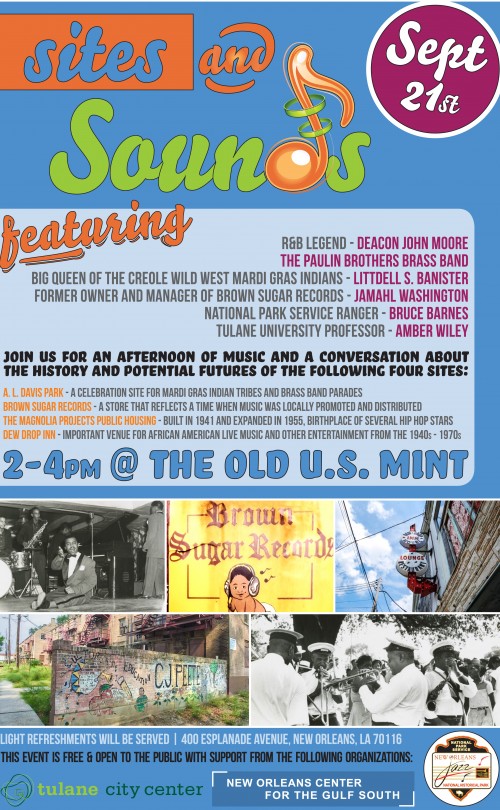On Saturday, September 21, the Tulane City Center, Tulane School of Architecture and the Center for the Gulf South host an afternoon forum on New Orleans music with a conversation about the history and potential future of four landmark music sites at the present location of the New Orleans Jazz National Heritage Park, otherwise known as the Louisiana State Museum’s Old U.S. Mint location from 2 p.m. until 4 p.m.
With the rapid economic and urban re-developments taking place throughout the city, the future of several of New Orleans’ most cherished cultural sites is in question. Of course there are large factions of folks that want to see these historical gems preserved, but the architectural logistics and funding required to do so is always a challenge. Some of the sites to be discussed at the “Sites and Sounds” forums are still in use on occasion, but usually are still in dire need of renovating or upkeep. Others have been completely abandoned, not because their owners or residents wanted to leave, but because either lack of enough money or Hurricane Katrina forced them out.
The irony at hand is: Mayor Landrieu’s office is steadily selling New Orleans as the destination for authentic music and culture, yet many of the places where this very music, food and dance were born are largely derelict, their fates unknown. However, institutions such as the Louisiana State Museum, its National Jazz Heritage Park and the students, professors and researchers at Tulane University are invested in exploring how these precious landmarks can be saved, and some of them even put back into cultural use. They invite you to join in the conversation this Saturday at “Sites and Sounds.”
HISTORIC NEW ORLEANS MUSIC SITES TO BE DISCUSSED ON SEPTEMBER 21:
- A. L. Davis Park – a celebration site for Mardi Gras Indian tribes and brass band parades
- Dew Drop Inn – Important venue for African American live music from the 1940s – 1970s
- The Magnolia Projects public housing – built in 1941, expanded in 1955, birthplace of several hip hop artists
- Brown Sugar Records – a store that reflects a time when music was locally promoted and distributed
As it just wouldn’t be a genuine New Orleans community gathering without live music, Deacon John Moore and the Paulin Brothers Brass Band will perform. A panel of speakers including Littdell S. Banister (Big Queen of the Creole Wild West Mardi Gras Indians), Jamahl Washington (former owner and manager of Brown Sugar Records), Bruce Barnes (of the National Park Service) and Amber Wiley (Tulane School of Architecture) will lead the discussion.
The event is free and open to the public. Light refreshments will be served.
Sites and Sounds Historic New Orleans Music Landmark ForumSaturday, September 21
2 p.m. – 4p.m.
New Orleans Jazz National Historic Park
(Old U.S. Mint at the Louisiana State Museum)
400 Esplanade Ave.
Admission: FREE
More Info: architecture.tulane.edu





